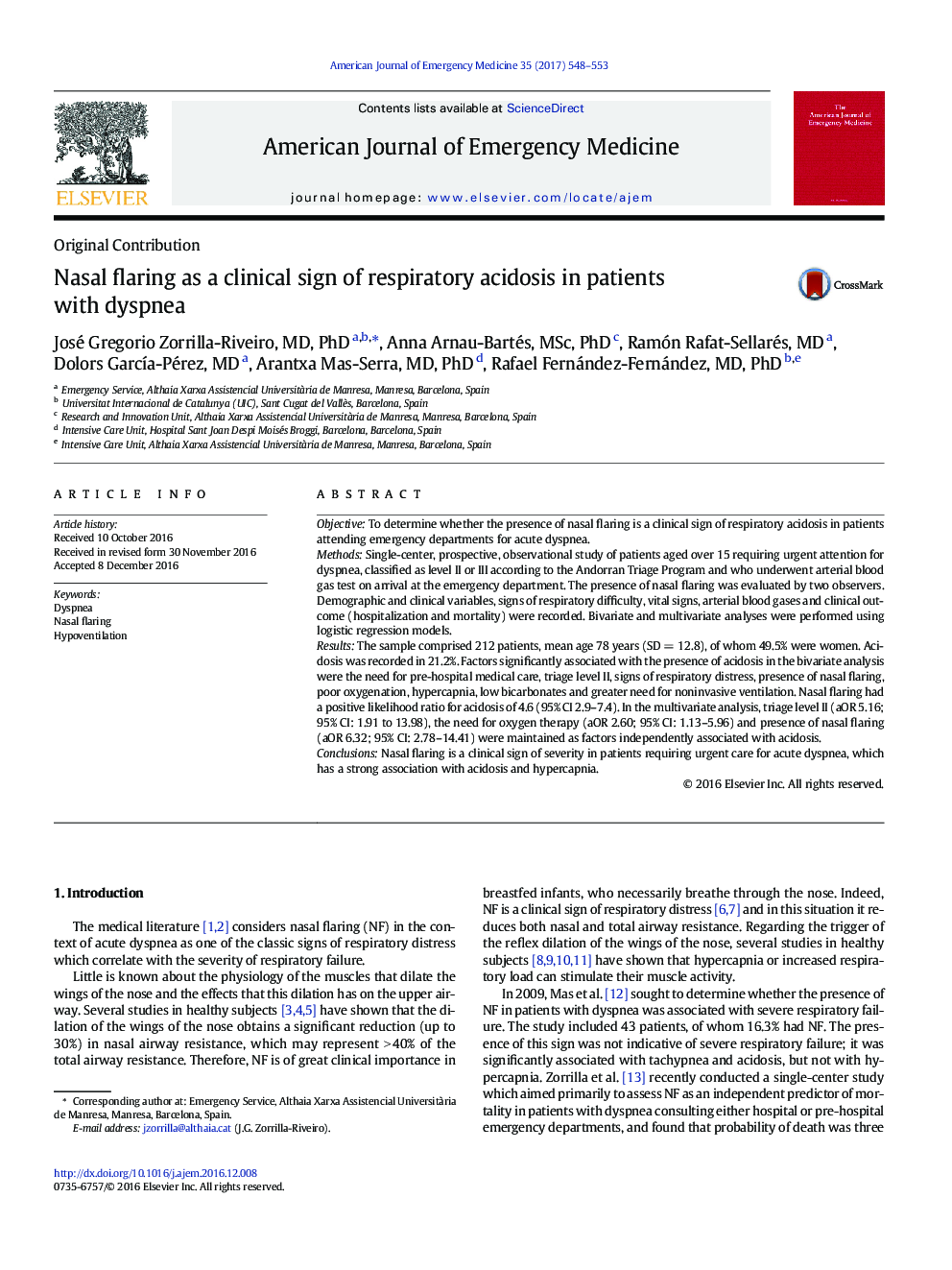| Article ID | Journal | Published Year | Pages | File Type |
|---|---|---|---|---|
| 5651149 | The American Journal of Emergency Medicine | 2017 | 6 Pages |
ObjectiveTo determine whether the presence of nasal flaring is a clinical sign of respiratory acidosis in patients attending emergency departments for acute dyspnea.MethodsSingle-center, prospective, observational study of patients aged over 15 requiring urgent attention for dyspnea, classified as level II or III according to the Andorran Triage Program and who underwent arterial blood gas test on arrival at the emergency department. The presence of nasal flaring was evaluated by two observers. Demographic and clinical variables, signs of respiratory difficulty, vital signs, arterial blood gases and clinical outcome (hospitalization and mortality) were recorded. Bivariate and multivariate analyses were performed using logistic regression models.ResultsThe sample comprised 212 patients, mean age 78Â years (SDÂ =Â 12.8), of whom 49.5% were women. Acidosis was recorded in 21.2%. Factors significantly associated with the presence of acidosis in the bivariate analysis were the need for pre-hospital medical care, triage level II, signs of respiratory distress, presence of nasal flaring, poor oxygenation, hypercapnia, low bicarbonates and greater need for noninvasive ventilation. Nasal flaring had a positive likelihood ratio for acidosis of 4.6 (95% CI 2.9-7.4). In the multivariate analysis, triage level II (aOR 5.16; 95% CI: 1.91 to 13.98), the need for oxygen therapy (aOR 2.60; 95% CI: 1.13-5.96) and presence of nasal flaring (aOR 6.32; 95% CI: 2.78-14.41) were maintained as factors independently associated with acidosis.ConclusionsNasal flaring is a clinical sign of severity in patients requiring urgent care for acute dyspnea, which has a strong association with acidosis and hypercapnia.
